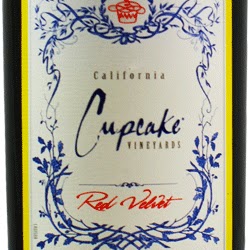“There’s no such thing as hell, but you can make it if you try.” So says Greg Graffin, singer-songwriter of the L.A. punk band Bad Religion. Those lyrics came to mind more than once as I was reading Rob Bell’s book “Love Wins: A Book About Heaven, Hell, and the Fate of Every Person Who Ever Lived.”
This Rob Bell guy is an interesting fellow. He’s definitely a Christian, and I’d call him an evangelical Christian, because he clearly wants to spread the message of Jesus. But Bell displays a sense of skepticism and a questioning mind that is incredibly rare among evangelical Christian writers.
Basically, Bell wants to let self-identified followers of Jesus to know that it’s OK to doubt or disbelieve the conventional Christian notions of the afterlife. He doesn’t reject heaven and hell outright, he just pokes holes in the mainstream conceptions of these two “places.”
“Somewhere along the way [Christians] were taught that the only option when it comes to Christian faith is to clearly declare that a few, committed Christians will go to heaven when they die and everyone else will not, the matter is settled at death, and that’s it.” Bell continues: “Not all Christians have believed this, and you don’t have to believe it to be a Christian. The Christian faith is big enough, wide enough, and generous enough to handle that vast a range of perspectives.”
Wait… What?
But Bell is right. Heaven and hell are concepts that have evolved over long periods of time within various Christian communities. By quoting extensively from the Bible, Bell shows that the prophets, Jesus, the Apostle Paul and others have all sorts of different perspectives on heaven and hell, none of which are perfectly clear.
Bell’s questioning continues: “Have billions of people been created only to spend eternity in conscious punishment and torment, suffering infinitely for the finite sins they committed in the few years they spent on earth?”
See, I’ve never believed in hell, neither fire, nor brimstone. I grew up in the Episcopalian Church, and I honestly cannot remember ever sitting in the pew hearing Father Ken preach about damnation and torture. There was a lot about the Sermon on the Mount, and a lot about grace and forgiveness, but not eternal punishment. Later, when my parents moved into a Baptist church, and even later into non-denominational evangelical churches, I heard more and more about this notion that most people I knew would end up being tortured for eternity. Death, darkness, misery, fire, gnashing of teeth… stuck forever in a world like the cover of a Cannibal Corpse album.
For a long time I’ve believed that if a specific faith cannot survive without the element of eternal punishment for nonbelievers, then that faith is misguided. I’ve got plenty of rational reasons not to believe what I was taught in Sunday school. But on an emotional — let’s even call it spiritual, level — I’m sickened by the idea of a god and his followers forever rejoicing while nonbelievers are damned to perpetual misery. If my only problem with Christianity was that it requires damnation for its opponents, that alone would be enough for me to reject the faith entirely. I don’t respond well to threats. (Of course, there’s no evidence of an afterlife, no evidence that consciousness extends past death and the deterioration of the brain, so my point isn’t much of a point.)
Bell also rejects the idea of hell as a place of eternal damnation: “Telling a story in which billions of people spend forever somewhere in the universe trapped in a black hole of endless torment and misery with no way out isn’t a very good story.” Preach it, brother! “Telling a story about a God who inflicts unrelenting punishment on people because they didn’t do or say or believe the correct things in a brief window of time called life isn’t a good story.” Bell, who is prone to repeating himself, tells readers many times to reject the image of god as vengeful arbiter of damnation. That god, if he existed, would not be deserving of praise or admiration, but scorn.

















